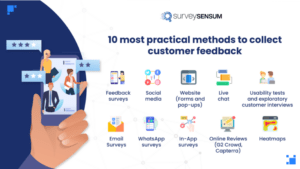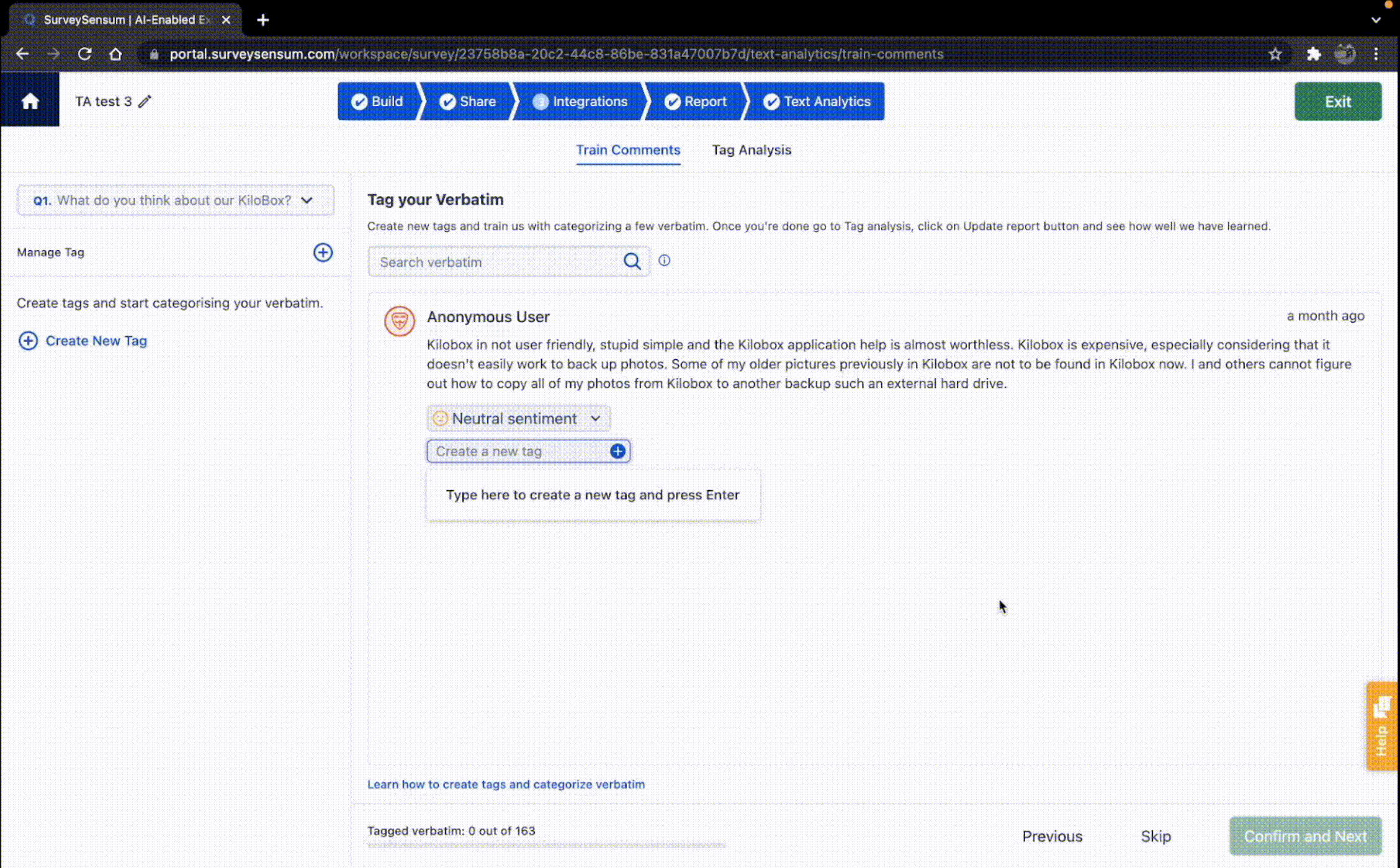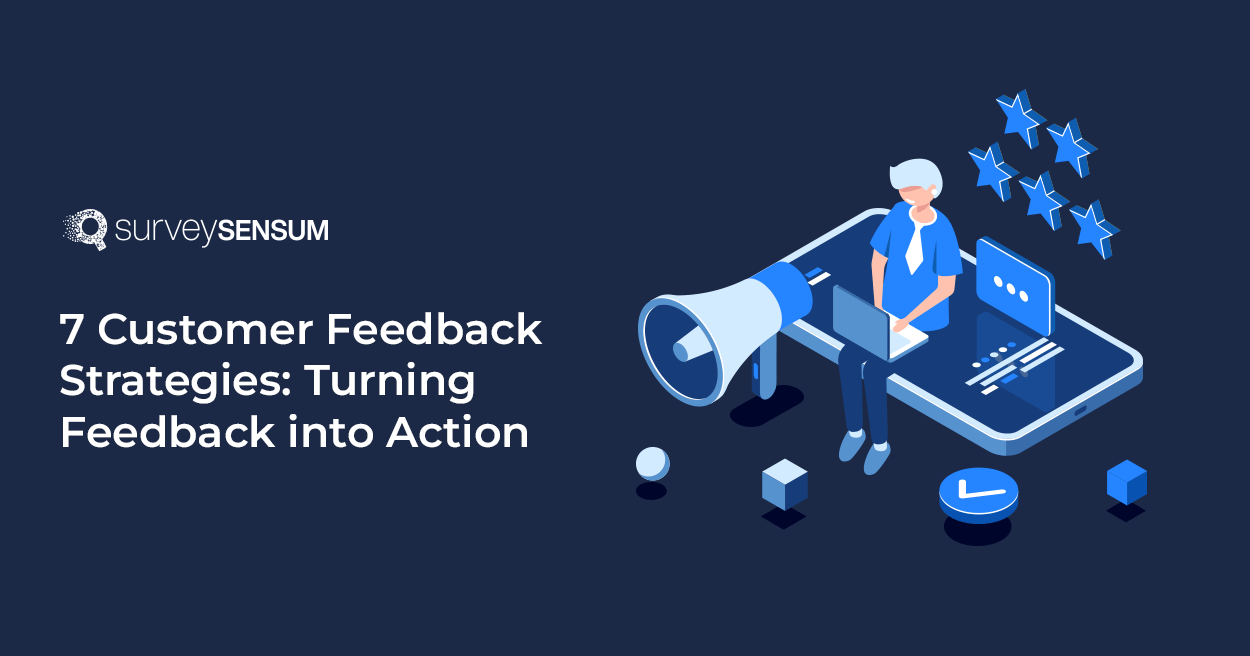
Have you ever felt lost in a heap of survey responses, wondering how to make them work for your business? Collecting customer feedback is one thing, but understanding how to use it can take time and effort.
Well, you are not alone! Many businesses gather feedback but need help figuring out what to do next. Even after accessing the right customer feedback tool, they need help analyzing the feedback and taking necessary action.
The result? Customers start to feel like their opinions don’t matter, and when they don’t see any changes, they quietly leave.
But you don’t want this to happen to your business, right? So, how do you make sense of all this customer feedback and transform it into actionable improvement?
It’s time for a plan! Let’s make those feedbacks super useful by turning them into actions.
Here, we’ve got six simple strategies that’ll help your surveys work wonders for your business. Ready to dive in and make your feedback count? Let’s go!
Strategy 1: Establishing a Customer Feedback Culture
Strategy 2: Collecting Feedback from Diverse Channels
Strategy 3: Analyzing and Prioritizing Feedback
Strategy 4: Prioritizing the Customer Complaints/ Trends
Strategy 5: Turning Feedback into Actionable Plans
Strategy 6: Communicate the Actions Taken to the Customers
Strategy 1: Establishing a Customer Feedback Culture
Creating a customer feedback strategy culture means making everyone in the company see how important it is to listen to customers. That involves:
- Valuing Customer Input: Everyone in the organization needs to understand the importance of customer feedback at all levels. And it should come from the top down. Ensure that leaders actively participate in and endorse the feedback culture.
- Using the Right Tools: Invest in tools that make feedback collection and management seamless, like SurveySensum, HubSpot CRM, or Google Analytics. Provide comprehensive training to empower your team to effectively leverage these customer feedback tools, ensuring they are utilized to their full potential.
- Getting Everyone Involved: Encourage all the front-line employees to gather feedback actively. And offer training programs or workshops on customer service and advocacy.
By doing these things, your organization can foster a customer-centric culture that not only helps boost customer satisfaction and loyalty but directly impacts the organization’s growth.
Strategy 2: Collecting Feedback from Diverse Channels

Why is gathering feedback from different places important when asking people about something, like a product or service?
The answer is clear – your customers are everywhere. They’re not just sending emails or making phone calls; they’re reaching out on social media, leaving reviews, and using various channels to connect with you.
So, by gathering feedback from all these different places, you get a wider understanding of what people think.
It’s like putting together puzzle pieces—each piece (or channel) gives you a bit of the picture, and when you combine them, you see the whole thing better.
Here are some best practices to make use of omnichannel feedback in the most lucrative way:
- Gather feedback from all sources: Engage customers across various channels such as social media, email, website forms, in-app surveys, review sites (like Yelp and Google Reviews), and direct messages. Each channel provides unique insights into customer preferences and experiences.
- Keep the brand tone and messaging the same: You might be responding on and from different channels, but your customers see your ONE identity. So make sure you are saying the same thing in the same way. Create a guideline for it.
- Timely Response: Make sure you respond promptly on all channels. Set clear response time benchmarks for each channel and adhere to them consistently.
- Centralized Feedback Collection: Use feedback management tools like SurveySensum to gather all feedback in one place for easy analysis.
By tapping into these different channels, you’re not just hearing from one type of customer; you’re getting a plethora of opinions and ideas.
Strategy 3: Analyzing and Prioritizing Feedback
Gathering the feedback in one place is one part of the job, the struggle however starts when you have to analyze that feedback!
Well, tools like ‘SurveySensum’s Text Analytics’ are the key here!
Gather feedback via ‘Feedback Tool’ or ‘Upload all previous responses’ on the platform and hit ‘Text Analytics’. You will get top trends and sentiments from thousands of uploaded feedback in just a few seconds.

For example, imagine you receive thousands of comments and messages from users about your app or service. This tool swiftly sifts through this vast amount of open-ended feedback. It then categorizes these responses by creating tags and identifies common patterns and themes within them.
Now that you’ve analyzed the feedback, the challenge is to prioritize it.
Analyze Customer Feedback with Text Analytics
Strategy 4: Prioritizing the Customer Complaints/ Trends
Effectively prioritizing customer complaints and trends is essential for addressing critical issues and improving overall customer satisfaction. And it’s a challenge faced by many.
Here’s a strategy to prioritize and manage customer feedback:
- Severity Assessment: Evaluate the severity of each complaint to determine its impact on the customer and the business.
- Categorization: Classify complaints into categories such as critical, major, and minor based on their potential consequences.
- Customer Impact: Prioritize complaints that directly impact a larger segment of your customer base.
- Frequency Analysis: Analyze the frequency of each type of complaint. Prioritize issues that are recurring or have a higher frequency, as they may indicate systemic problems.
- Strategic Alignment: Align prioritization with strategic business goals. Address complaints that align with organizational priorities and long-term objectives.
- Cross-functional collaboration: Collaborate with different departments and gather insights from diverse perspectives to prioritize and address complaints effectively.
- Time Sensitivity: Consider the time-sensitivity of complaints. Address urgent issues promptly, especially those that can impact customer satisfaction in the short term.
By implementing this prioritization strategy, businesses can effectively manage customer complaints and trends, focusing resources on addressing the most impactful issues and continuously improving the overall customer experience.
Strategy 5: Turning Feedback into Actionable Plans
Turning feedback into actionable plans involves making practical changes based on what customers are looking for.
But how would you do it? By following these steps:
- Figure out what’s urgent! Fix problems that bother customers a lot and are easy to fix.
For instance, if the checkout link is broken, ask your team to fix it fast to refrain the customers from bouncing back.
- Developing clear and specific action plans to address prioritized feedback is very important. This plan involves optimizing code, reducing app size, and testing on various devices. They outline specific steps and strategies to resolve the problem efficiently.
- Assigning ownership and deadlines for implementing feedback-driven initiatives ensures tasks don’t fall through the cracks and progress is measurable.
- Communicating action plans to stakeholders involving them in the implementation process and sharing the specifics of the plan is very crucial to ensure everyone is on the same page and understands the steps being taken.
Following these steps create a comprehensive feedback loop. Clear action plans provide a roadmap for improvement, assigning ownership ensures accountability and effective communication keeps stakeholders informed and engaged.
Strategy 6: Communicate the Actions Taken to the Customers
How will the customers know if you are even listening to their feedback?
That’s why they see some results or changes, and YOU need to INFORM them of it.
Effective communication of the actions taken is a crucial step in maintaining transparency and building trust with customers.
Here are some tips to effectively communicate with the customers:
- Make the communication clear, timely, and focused showcasing the positive changes made as a direct response to their feedback.
- Utilize various channels such as email newsletters, social media platforms, or even within the product interface to convey the improvements.
- Clearly outline how the feedback was instrumental in driving these changes and emphasize the commitment to customer satisfaction. This not only keeps customers informed but also demonstrates the company’s dedication to continuous improvement and customer-centricity.
- Additionally, welcome further feedback, fostering an open dialogue and reinforcing the value placed on the customer’s voice in shaping the product or service.
With these tips, businesses can effectively communicate the actions taken to customers, fostering transparency, trust, and a sense of partnership in the continuous improvement journey.
Strategy 7: Measuring the Impact of Feedback Actions
Measuring the impact of feedback actions is like keeping a score on how well your changes are working.
Follow these steps to measure the impact of feedback actions:
- Setting Up Metrics: Identify specific metrics that are directly aligned with the goal of your feedback actions. These metrics usually include customer retention rates, net promoter scores, customer satisfaction scores, sales figures, or any other relevant KPIs .
- Compare with Previous Data: Compare these metrics after implementing your actions with the initial numbers. Look for noticeable improvements and areas that might need more attention.
- Continuous Improvement: Based on this data improve feedback processes and action plans. If something isn’t working as well as you hoped, figure out why and adjust accordingly.
In short, keep refining your strategies based on what the data reflects.
So, these are the 7 customer feedback strategies that help you turn your feedback into action and meet customers’ expectations.
Conclusion
As you learned, turning customer feedback into action isn’t just about collecting opinions; it’s about making real changes that benefit both your customers and your business.
By establishing a customer feedback culture, collecting diverse feedback, analyzing it smartly, and turning insights into action plans, you’re on the right path toward your business’ success. Keep listening, adapting, and improving—your customers will notice the difference. It’s time to turn feedback into your secret weapon for success!
If you’re aiming to upgrade your feedback approach and improve your business, SurveySensum is here to assist you. This platform helps collect, analyze, and act on crucial customer insights.















